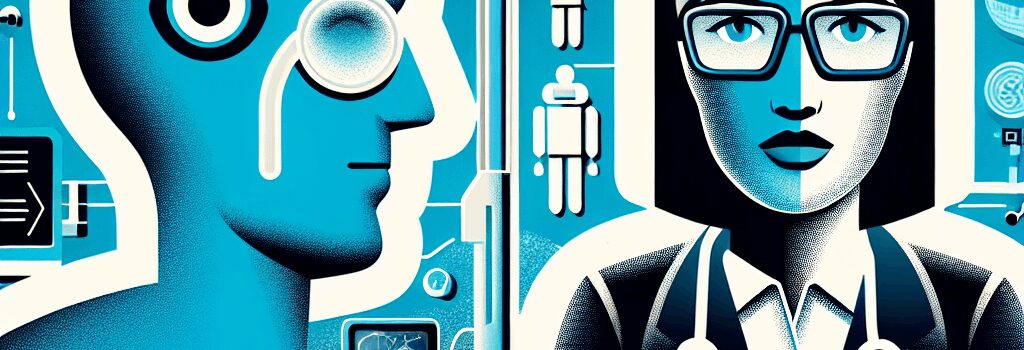Skepticism vs. Optimism in AI’s Impact

A recent Pew Research Center survey has once again highlighted a significant divide between the views of national experts in artificial intelligence and those of the general American public. While experts forecast predominantly positive outcomes from AI in the next two decades, the majority of Americans remain unconvinced. This article delves into the technical intricacies of AI advancements, examines the socio-economic implications, and discusses the growing concerns that frame the ongoing debate over AI regulation and societal impact.
Divergent Perspectives: Public Wariness vs. Expert Enthusiasm
The survey compared responses from 1,013 AI experts and a nationally representative sample of 5,410 US adults. According to the study, 56% of experts believe that artificial intelligence will have a very or somewhat positive impact on the United States over the next 20 years, contrasted with only 17% of the general public. This disparity is further emphasized when considering personal impact: 76% of experts are confident that AI will benefit them individually, whereas only 24% of Americans feel similarly, with nearly half of the public anticipating potential harm.
Technical Concerns and Deep-Rooted Skepticism
With AI becoming more prevalent in applications ranging from deepfakes to automated hiring algorithms, the public’s fear is grounded in several technical and ethical concerns. Many Americans are troubled by issues such as the robustness of algorithms, the potential for bias in machine learning models, and the ways in which automated systems might contribute to misinformation. Although experts emphasize improvements in neural network architectures and explainable AI measures, the general sentiment remains one of apprehension regarding job displacement, privacy breaches, and a loss of human oversight in critical decision-making processes.
Additional Analysis: Implications for the Labor Market
One of the most compelling sections of the survey centers on job impacts and economic predictions. While 73% of experts are optimistic about how AI will streamline and enhance workplace productivity, only 23% of the public share this view. Technical innovations such as robotic process automation (RPA) and advanced natural language processing (NLP) are transforming industries. However, the fear that AI could lead to gig-like contract work with reduced wages and job security continues to fuel public unease. This divergence highlights the need for both improved workforce retraining programs and policies that address the socioeconomic shifts driven by automation.
Deep Technical Dive into AI Applications and Limitations
Experts in the field point to the rapid evolution of AI subfields such as reinforcement learning, deep learning, and generative models. While these technologies offer exciting possibilities—from automating code generation to revolutionizing customer service—the public remains skeptical about their reliability and ethical use. Recent discussions among academic and industry professionals emphasize the importance of robust technical specifications, thorough testing in real-world scenarios, and transparent methodologies that bridge the gap between what AI experts understand and what the broader community experiences.
Navigating Government Regulation and Public Trust
Despite the optimism among technical experts, there is a shared concern about the government’s role in regulating AI. Both experts and the public expressed distrust in federal oversight, with calls for more stringent and transparent regulatory measures. The survey revealed that a significant number of respondents from both groups are skeptical of the current pace of government action, fearing that insufficient understanding of AI technology might lead to poorly constructed policies. This sentiment was echoed by voices in the Center for Democracy and Technology and independent researchers, who advocate for enhanced public input and safeguards regarding issues such as data privacy, civil rights, and algorithmic transparency.
Implications for Developers and Technologists
From a technical standpoint, the findings have important ramifications for developers and the wider tech community. The survey underscores a vital need for interdisciplinary collaboration. For example, integrating user feedback into AI development processes can ensure that AI systems are designed with end-user needs and concerns in mind. This is particularly crucial in areas like medical diagnostics, where 84% of experts are optimistic about AI’s potential benefits compared to only 44% of the public. The gap suggests that increased public education about technical safeguards and error mitigation could play a key role in boosting trust and adoption.
Future Outlook: Balancing Innovation with Inclusion
Amid the contrasting views on AI’s potential, both sides agree on several points—chief among them, the importance of striking a balance between automation and human oversight. Experts like Alex Hanna and Emily Bender argue that rather than striving for absolute alignment between experts’ projections and public perceptions, the goal should be to incorporate diverse perspectives in the design and deployment of AI systems. This approach not only addresses issues of gender disparity in AI design but also paves the way for more inclusive and community-focused technological solutions.
In conclusion, as AI tools become increasingly pervasive—often in ways the average citizen might not even recognize—the race to build a more equitable and transparent AI ecosystem has never been more critical. Continued monitoring of public opinion and deeper collaboration between technologists, policymakers, and the public will be essential to ensure that the rapid pace of AI innovation translates into tangible, broadly distributed benefits.
Source: Ars Technica